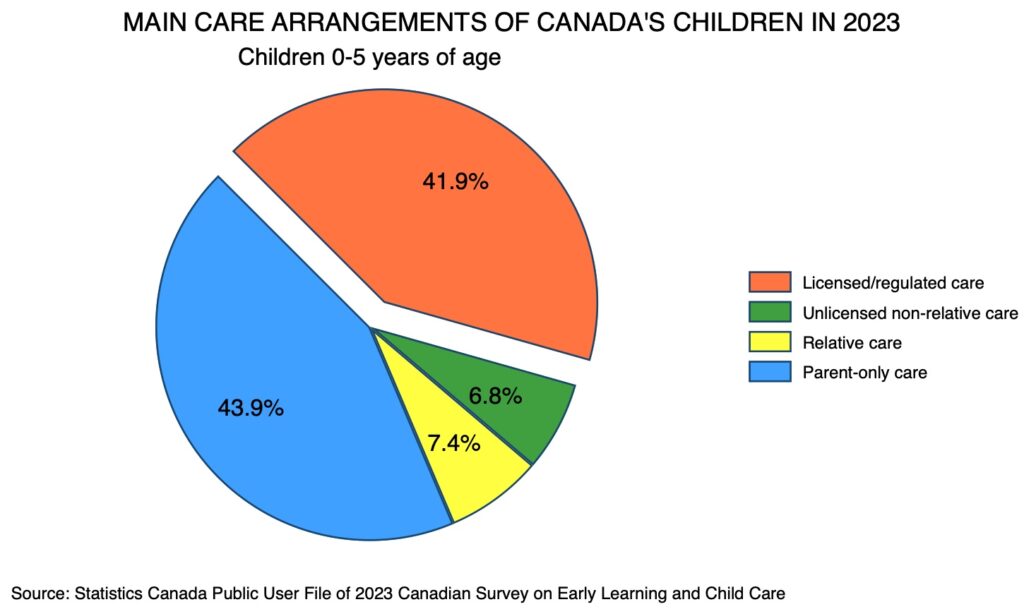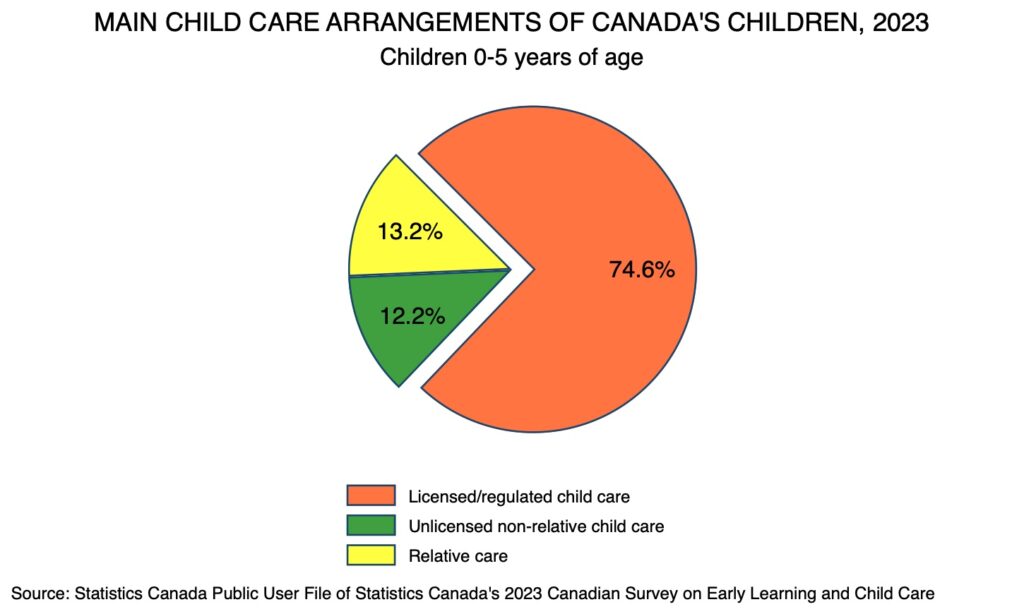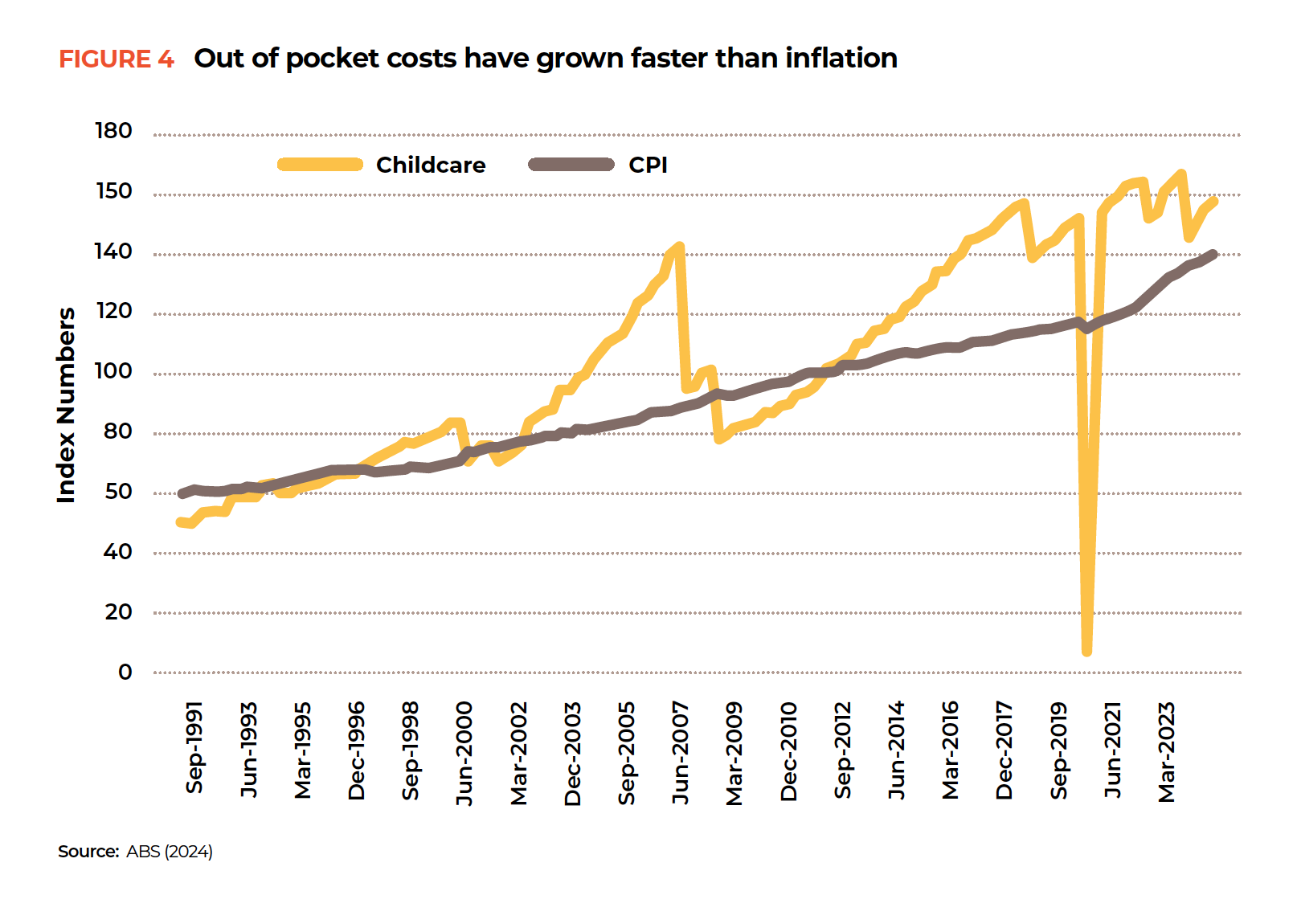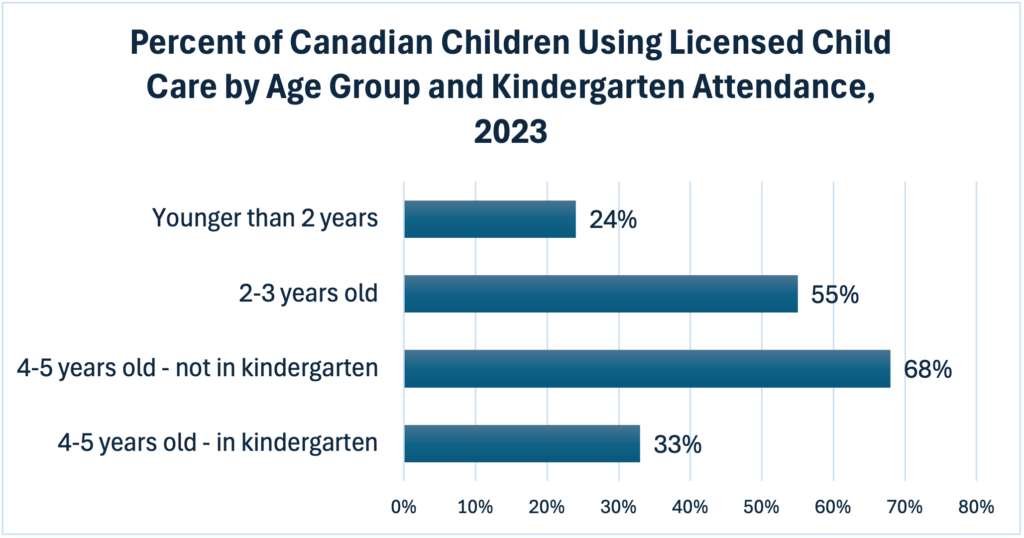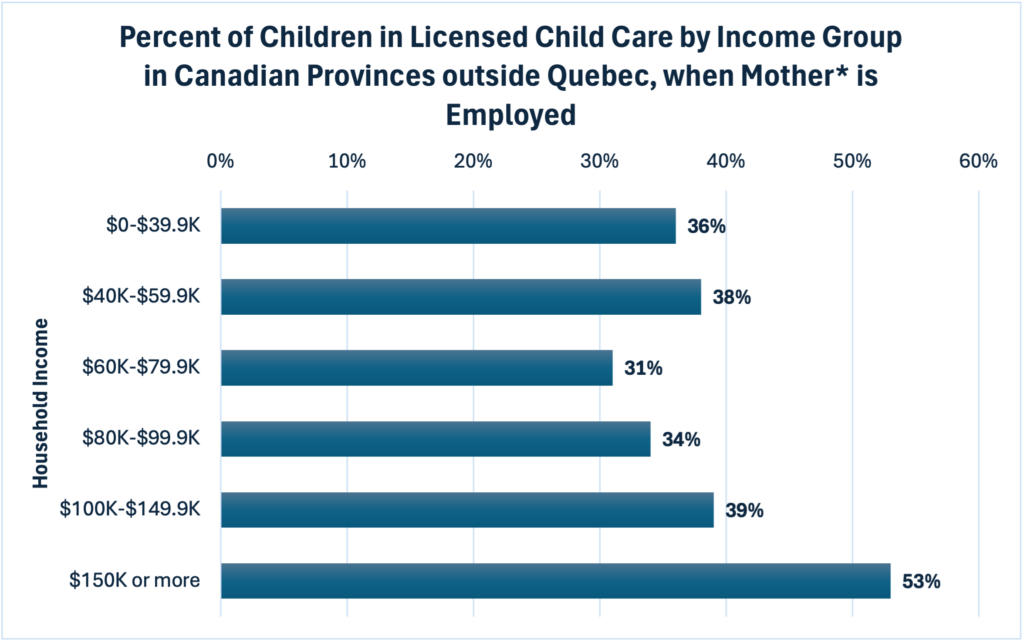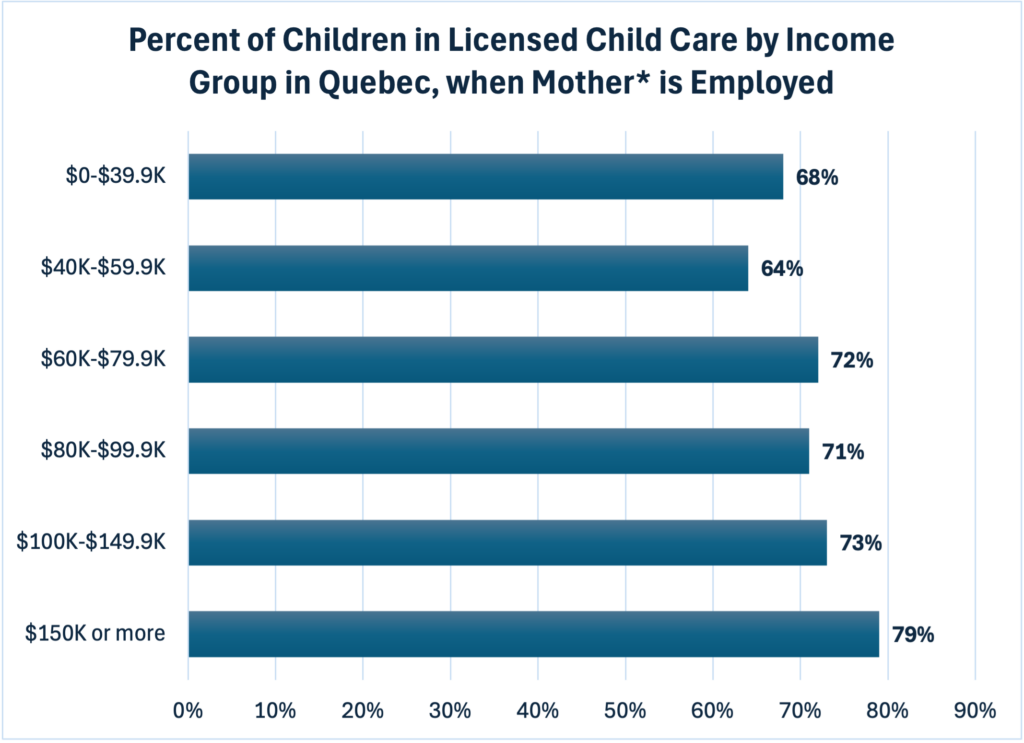Ontario’s new funding formula is, of course, new. To be implemented in January 2025. So, everyone is feeling around it like the proverbial seven blind men around the elephant. There are different opinions depending upon which part you are touching.
What we do know for sure is that this is a cost-based funding formula, seeking to take into account the different cost situations facing different child care centres. It will replace the revenue-replacement model which began in March 2022, which was based only on what parent fees were charged by a centre, not on their costs. For many centres, the revenue-replacement model failed to cover true costs, driving centres into debt as a result, or forcing them to close rooms.
This evaluation is based only on the funding formula for child care centres, not for home child care.
THE FUNDING FORMULA – A THUMBNAIL SKETCH
Ontario’s new funding formula will deliver operational funding to centres that are in the $10 a day program (CWELCC). Each centre will have to come up with a projected operating budget that identifies how many licensed spaces they have in each age group, how many of these spaces will be operational in the coming year, whether the centre is located in a community space or a school, the location of the centre, and the number of days of operation for each age group per year. These data will be fed into a funding formula to determine how much revenue the centre will receive for operations in the coming year (to cover wages, salaries and benefits of program staff and supervisors, food, accommodations, administration, materials and so on).
The calculated numbers will be affected by the geographic location of the centre, with centres in Toronto getting a boost and many others having their calculated allocation reduced a bit. This is intended to reflect differences in the costs of operation in different locations around the province.
If the spaces are existing spaces (part of the CWELCC $10 a day program as of August 14th, 2024) and the calculated revenues do not cover their projected costs, they will be eligible for a Legacy Top-Up to revenues. As long as the centre can show that its projected costs reflect the (relatively high) legitimate historical costs of operating this centre, it will receive this extra revenue through a Legacy Top-Up. New spaces are not eligible for a Legacy Top-Up, but they will get a Growth Top-Up. A Growth Top-Up boosts up the amount calculated by the funding formula for new spaces, by different amounts based on geography.
A centre can spend its allocation on any eligible cost, and nearly all costs that are clearly related to the provision of quality child care for children will likely be eligible.
On top of this, there is an allocation for profit or surplus. It’s called an “allocation in lieu of profit or surplus”. It’s about an 8.5% markup on top of other revenues. For-profit centres will take this as profit. Non-profits will take it as a surplus to be used to cover emergency shortfalls in the future or to cover expected repairs and maintenance, or to improve compensation and quality.
Service System Managers (SSMs) are the gatekeepers of the system. They hand out funding according to submitted budget plans for the coming year. They will adjudicate issues related to the “eligibility” of certain expenditures. They will assess the reasonableness of expenditures in an annual cost-review process. They will also continue to administer the child care subsidy system. There will no longer be operating grants and wage enhancement grants for spaces that are part of the $10 a day system, but there will continue to be such grants for child care for children 6-12.
For more details about how the new funding formula works, see my blog from September 23rd, 2024.
OK, on to the evaluation:
POSITIVES OF THE FUNDING FORMULA
Let’s emphasize the positives first. The Ministry of Education has made a serious attempt to develop a cost-based funding formula – a funding formula that will cover the legitimate costs of operators seeking to provide quality services for children. It begins the process of developing public management of child care operations with financial accountability for the money spent. It is not perfect, as you will see below; there are some serious problems that remain. But first, here are some of the positives:
- Finally, we are getting rid of the stopgap “revenue-replacement” funding model which was not based on the true costs of operating a child care facility, but was based on whatever your parent fees for children 0-5 happened to be on March 27, 2022. For some centres – those who had kept fees low, or those who used higher school age fees to cross-subsidize parent fees for younger children, or those seeking to attract more staff – revenue-replacement was extremely unfair. These centres went into deficit and many shut down rooms. So, having a funding model which purports to be based on costs is a big step forward.
2. For those centres seeking to expand and licensees seeking to set up new centres, it is now possible to forecast what your annual revenues will be. This is indispensable to support growth.
3. For centres that have historically had costs of operation that are higher than the Benchmark Allocation (what the Ministry believes the underlying costs of operation truly are), there is a Legacy Top-Up. That means that these centres, for their existing spaces, will not go out of business. Their costs (for existing spaces, but not new ones) will, apparently, be covered at their current level going forward.
4. For centres that have operating costs that are lower than the province’s Benchmark Allocation (apparently 50% of the centres in the province), they will have revenues that are greater than their costs (i.e., they will receive the Benchmark Allocation). So, these centres could and should spend additional revenues on improving quality, including wages and benefits to attract and retain staff. If they don’t fully spend their allocation, the surplus will be taken back at the end of the year.
5. There are important measures of financial accountability built into the new funding system – standardized financial reporting, audited financial statements, a cost review process at the SSM level for selected centres and agencies and an external compliance assessment process for a 5% sample of centres/agencies. Financial accountability is a key aspect of public management. If 90% of revenues are coming from government, we need to know that these revenues are being spent sensibly improving the lives of children and parents.
6. The new funding formula determines the total amount of revenue a centre will get, but gives a very large measure of flexibility to the centre on how it spends this money. Instead of having multiple different spending envelopes generated by multiple different granting programs, nearly all centre operating revenues will be in one envelope. This is positive, because we want centres to have the capability to tailor their programs to the character of their community and the needs of their children and families. Centres should not have cookie-cutter programs – the same for everyone. This funding formula enables diversity.
7. There is some limitation on the amount of revenues that can be taken out “in lieu of profit”. There is a formula for the amount “in lieu of profit/surplus”. This guarantees operators a minimum amount of profit or surplus but this is also a maximum. I will have more to say about this below.
NEGATIVES
8. The funding formula is not based on a wage grid. Instead, there is a wage floor for RECEs – currently $23.86 per hour. A wage grid would establish wages to be paid to all certification levels of staff, including untrained staff, cooks, supervisors, etc., with increases in this hourly wage based on experience and qualification level. Many Canadian jurisdictions now have wage grids.
A wage grid is designed to attract and retain educators and other staff. The absence of a wage grid means that paying low wages is an attractive competitive strategy for some operators – low wages will potentially leave them surplus revenue to spend in other ways. For instance, for-profit operators could use these freed-up revenues to pay accelerated mortgage costs so that they end up owning child care assets sooner.
9. Geographic Adjustment Factors (GAFs) and Growth Multipliers (GMs) play a very large role in determining how much annual revenue any centre will get. And yet the justification for the GAFs and GMs is clouded in mystery. Geographic Adjustment Factors vary from 0.79 (Kingston, Lennox and Addington, Hastings, Renfrew) to 1.07 (City of Toronto). In other words, for the same size of centre, a child care centre in Kingston will receive a Benchmark Allocation that is about 74% of the Benchmark Allocation in Toronto ((i.e., (0.79/1.07)*100). Since wages and benefits are the lion’s share of child care costs, we have to ask whether compensation is that much lower in Kingston than in Toronto. And if it is, should it be?
For new centres, a Growth Multiplier builds new revenue variation on top of the Benchmark Allocation. Growth Multipliers are sometimes very small, for instance between 0.00 and 0.03 in City of Cornwall, Lennox and Addington, and Cochrane DSSAB, and sometimes much larger (for example, the multiplier is 0.30 in County of Lanark, United Counties of Prescott and Russell, County of Renfrew). Lanark and Lennox and Addington are very close to each other. It’s hard to believe that a centre in Lanark deserves a 30% supplement to its allocation in order to fund new growth, whereas a new centre established in Lennox and Addington has to get by with only a supplement of 2% to the regular Benchmark Allocation. If you do a bit of math, you can figure that the amount of revenue available to a new centre in Toronto will be over 50% higher than to a new centre in Lennox and Addington. That seems oddly disproportionate.
10. In the market economy, profit is a reward to the successful entrepreneur. In other words, it is a reward to the entrepreneur who takes a risk, starts a business, and is successful in selling a product or service that people want to buy. Not all entrepreneurs will make a profit, but the desire to earn a profit encourages entrepreneurs to spend time figuring out what people want and how to design and produce it for a price that consumers can afford. That’s the theory, anyway. And we put up with some producers earning big profits because we believe that profit encourages (some) entrepreneurs to try to satisfy consumer demand.
However, in this funding formula, profit has very little to do with desirable behaviours. Every provider will earn a profit of something like 8% of revenues as an automatic result of the funding formula. And that will be true for providers who work hard on improving quality and those who do not know much or care much about quality.
11. I said above, under the list of positives, that the funding formula limits the amount of profit that can be earned (actually called the allocation “in lieu of profit/surplus”). Formally, that’s true, but there appear to be other ways that unscrupulous for-profit operators could increase their takings. For instance, operators that own their own facilities can lease them back to themselves as the centre owner. And, a centre owner can do management and supervisory work in her own centre and get paid for it. The financial accountability measures in the funding plan are supposed to ensure that the amount of lease payments and the amount of owner’s compensation are reasonable, but that will be a difficult thing to do.
12. The allocation for wages and benefits of supervisory staff does not depend on the size of the centre. However, large centres need more supervisory staff than small ones do. A centre with 150 children will need both a supervisor and an assistant supervisor, at least. Therefore the new funding rules, that base the revenues for supervisor compensation only on the number of days of service operation rather than on the number of children, will encourage the licensing of many smaller centres which may not make sense. It might actually be a more efficient use of resources to encourage larger centres, within reason.
13. The most general and perhaps most serious critique of the funding formula is that it does not effectively incentivize quality improvements by operators. PEI’s funding formula encourages centres to hire staff with higher levels of qualifications – a centre’s funding gets multiplied when they hire better paid staff. Quebec’s funding formula gives supplementary funding to centres that have higher costs because staff have greater amounts of experience or higher qualifications. Ontario’s funding formula ensures that an extra dollar spent on quality or staff wages is a dollar taken away from something else. As point 4 above notes, there is some encouragement to spend on quality for centres that have costs less than their Benchmark Allocation. But, there is no encouragement to spend on quality for the 50% of centres that have costs higher than this.
BAD BITS
14. The revenue allocation for children of kindergarten age appears to be too low. I’ve done calculations of the amount of revenue (including parent fees) that the formula allows for kindergarten-age child care. If you have a centre with 78 kindergarten children, located in a school, the formula gives an average revenue per child per day, from all sources, of only $26.66. This would need to cover wages and benefits of staff and supervisor and all operational costs. This figure then gets multiplied by the Geographic Adjustment Factor. So in Toronto, multiplying by 1.07, the revenue for kindergarten-age children would average $28.53 per child. In Kingston, multiplying by .79, the revenue for kindergarten-age children would average only $21.06 per child. All other locations will be somewhere in between.
And this daily revenue allocation is the same for the (approximately) 191 days per year when a centre has to pay the costs of part-day care (before-and-after school care) and for the (approximately) 71 days when a centre has to pay the costs of full-day care required on professional development days, March and Winter Breaks, during summer school holidays, and for some statutory holidays. But clearly, there are many more hours of staff time required for full-day care than for before-and-after school care. How can it make sense to get the same revenue allocation for both? Centres will have incentives to shut down any summer programming for sure. Creating more service shortages.
15. The kindergarten problem with “hours” is also a problem across the system. The funding formula does not take into account the daily number of hours of service a centre provides. A preschool that operates only 2 ½ hours per day will get the same revenue allocation as a full-day centre open 11 hours per day. If a centre cuts its hours to provide 9 hours a day instead of 11 or 12, the funding formula will still give it the same daily revenue. The funding formula incentivizes cutting hours of care, for no obvious purpose.
This will be particularly problematic for any centre that seeks to provide non-standard-hours care, such as staying open in the evenings, or opening early in the mornings. The extra hours of service will not deliver any additional revenue to the centre, so centres providing non-standard-hours care will be incentivized to close.
16. The funding formula is silent about what is happening with the child care subsidy system. As we know, the subsidy system, reduces or eliminates parent fees for families with particularly low levels of income. Apparently, the Ministry intends to provide sufficient funds to Service System Managers to at least keep the number of subsidized families at current levels, but it would be good to have assurances of this (or better) within the funding formula document itself.
17. The funding formula is similarly silent about the funding of services for children with special needs. Funding and provision of services to children with special needs is an essential part of a publicly-managed child care system, but it is unclear how this will happen.
18. The funding formula is also silent about funding for professional development of staff. Professional development is central to maintaining and enhancing quality of services, but is professional development now to be an optional activity for centres that have extra funding available, and not for others?
OVERALL EVALUATION
Designing a funding formula in a complicated province like Ontario is not easy. And the near complete absence of cost data before the 2023 data collection process did not help. The Ministry of Education has made a serious attempt to produce a cost-based funding formula that will permit Service System Managers to publicly manage child care centres and family child care agencies in their areas. Service System Managers have many new roles – providing interpretation of new funding guidelines, judging the appropriateness and reasonableness of expenditures, managing processes of financial accountability, etc. – and will require additional resources to carry them out.
The speed of implementation of this funding formula is causing significant upset and chaos. Technical documents that explain how benchmarks, adjustment factors and growth top-ups were calculated are not yet available, nor are standardized reporting forms. Centres are having to plan next year’s budget without sufficient time to understand the new revenue rules. This is unfortunate and increases the cacophony of criticism of the program, some of which could have been avoided. However, the revenue-replacement model this replaces was even worse for centres, so we do not want to pause or reverse the transition to a new cost-based formula for centre revenues. In 2025 we will have to do the best we can to implement this new funding system. There will be mistakes and inconsistencies this year. There will be, and have been, different interpretations of what costs are eligible from different SSMs. The Ministry will have to provide enhanced resources to help and to solve problems.
The funding formula would be much better if based on a compulsory wage grid – there would be much less variation in expenditure levels from centre to centre and compensation would be mostly removed as a form of competition between centres.
Revenue amounts for care of kindergarten-age children are too low and will incentivize dropping or reducing these programs.
Failure to take hours of service into account in determining revenue allocations is highly problematic and will incentivize shortening the daily hours of service provided.
We need information about the funding of subsidies, special needs and professional development.
Many centres have run deficits in the last couple of years due to the shortfalls of the revenue-replacement model. Is there going to be a special funding program through the SSMs to wipe out these debts, or are they somehow handled by Legacy Top-Up funding? This is unclear.
The new funding formula is based on providing revenues for individual centres, not for groups of centres. However, there are a significant number of multi-site providers in Ontario, particularly not-for-profits or municipal providers. There is no provision in the new funding formula for multi-site planning and operation. A multi-site agency cannot use surplus revenues in one centre to cover shortfalls or emergency repairs in another. Going forward, the funding formula will need to be amended to encourage and facilitate multi-site operation rather than to discourage it.
Legacy Top-Ups will allow all current child care centre providers to fund all eligible costs at current levels, which is a way of avoiding immediate crises that would threaten the whole system. This is a smart feature of the funding formula. No existing centre will have to go out of business because the funding formula will not cover its current legitimate costs.
I haven’t yet looked at the funding formula as it applies to family child care agencies and family child care homes. Reportedly, this is a mess, but I can’t know that yet for sure.
The biggest question going forward will be whether there is sufficient funding from this formula to support new spaces. I have done some modelling that gives me approximate numbers. What I have done is to look at centres that only have children from one age group and estimate the revenue per child that would be available through the Unadjusted Benchmark Allocation. The Unadjusted Benchmark Allocation is the calculated revenue available to the centre before Geographic Adjustment Factors are included. This Unadjusted Benchmark Allocation is different for a centre in a community compared to those centres that are school-based.
When I do these calculations, I find that for infants the total average daily revenue per child is between about $130 and $137 per day (lower for school-based than for community-based). For toddlers, the total average daily revenue per child is between $87 and $95. For children of preschool-age, the total average daily revenue is between $65 and $73. For children of kindergarten-age, the daily revenue is between $26 and $39. To know for your centre how much funding would be available, these numbers would have to be multiplied by the relevant Geographic Adjustment Factor and, for new spaces, by the relevant Growth Multiplier. Is this enough funding to support growth of new spaces? The jury is still out. We need to compare these revenue figures to expected costs of good quality programs.
If the new funding formula does not support the operating costs of new centres, it is a failure, so this is a central issue. I am happy to hear from you about whether the funding formula will support expansion in your community. And, let us not forget that expansion also requires capital funding, which is in very short supply from this government.



